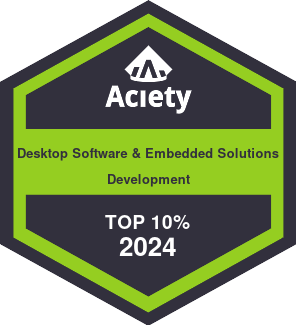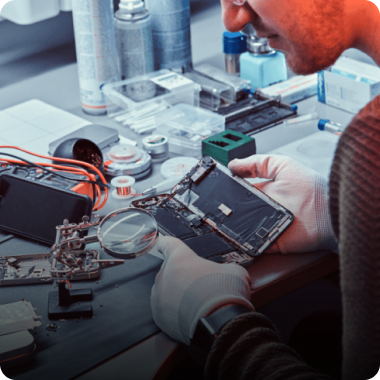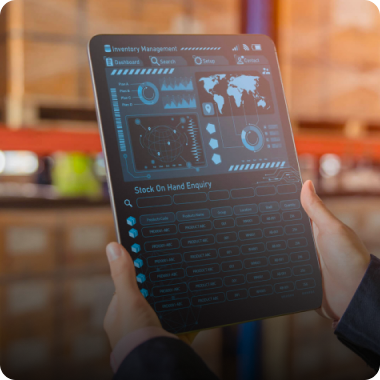
Hardware Design and Engineering Services
Sirin Software offers a complete cycle of hardware design services - from the selection of industrial components to the PCB design, prototype manufacturing, and testing. We develop solutions for digital and analog electronics, custom IoT sensors, and wireless network communication devices. With expertise, we establish ourselves as a robust hardware design company.
Awards
Whether you are looking to upgrade existing electronic hardware or need to design a completely new hardware solution, we are here to help, providing a comprehensive range of hardware development services including enclosure, PCB, and FPGA design. Therefore, our team supports our customers at all stages of electronic product development – from conceptualization through proof of concept (POC) development to mass production.
Hardware Design and Engineering Services We Provide
System Architecture & Integration
Our team plans and designs system structures and guarantees the seamless integration of various hardware components for optimal system performance and efficiency.
Electronic Design
We specialize in designing and implementing electronic circuits and systems, using tools like Altium Designer, KiCAD, and OrCAD to deliver top-quality solutions.
Validation, Verification & Debugging
Our hardware product engineering design services guarantee that hardware designs meet specified requirements, function as intended, and are free from any issues.
Prototyping
We transform design concepts into functional prototypes using advanced tools and techniques, enabling real-world testing and refinement for superior end products.
Independent Design Evaluation
To confirm the dependability and lifespan of the product, our experts undertake an unbiased assessment of the design, spotting possible problems early on.
PCB Design, Gerber Files, and BOM Preparation
PCB design involves creating schematics and layouts for printed circuit boards to ensure proper functionality and connectivity. Our experienced team uses such tools: Altium Designer, KiCAD, Solidworks PCB.
Our Hardware Engineering Approach
Cooperation Scenarios
Technologies We Use






hardware
Industries We Work With
Why Choose Sirin Software?
FAQ
Can hardware work without software?
Hardware can exist without software, but it won't perform any useful tasks. Software is like the brain of a device, instructing the hardware on what actions to take. Without software, the hardware would be like a body without a brain, unable to function or perform tasks.
What is the difference between hardware design and PCB?
Hardware design is a broad term that includes all aspects of creating the physical parts of a device, including the creation of printed circuit boards (PCBs). PCB design is a more specific area of hardware design. It involves creating the layout for a circuit board, including where components like resistors, capacitors, and microchips will be placed.
Do you carry out certification of finished products?
While we focus on designing and engineering hardware, we don't directly handle product certification. However, we ensure our designs comply with relevant industry standards, making the certification process smoother for our clients. We can also provide support and guidance during the certification process if needed.
















